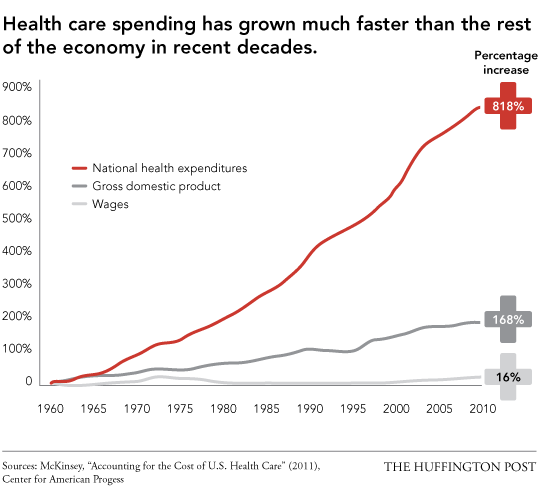Long-time readers may recall the Burrito Index, my real-world measure of inflation. The Burrito Index: Consumer Prices Have Soared 160% Since 2001 (August 1, 2016). The Burrito Index tracks the cost of a regular burrito since 2001. Since we keep detailed records of expenses (a necessity if you’re a self-employed free-lance writer), I can track the cost of a regular burrito at our favorite taco truck with great accuracy: the cost of a regular burrito has gone up from $2.50 in 2001 to $5 in 2010 to $6.50 in 2016.
It’s time for an update: the cost of a regular burrito has now reached $7.50, triple the 2001 cost. That’s a 200% increase in 17 years. According to the federal government, inflation since 2001 has risen about 40%: what $1 bought in 2001 now costs $1.43, according to the BLS Inflation calculator.
The Burrito Index is five times the official inflation rate. As I noted in The Disaster of Inflation–For the Bottom 95% (October 28, 2016) and Inflation Isn’t Evenly Distributed: The Protected Are Fine, the Unprotected Are Impoverished Debt-Serfs (May 25, 2017), the gross under-reporting of inflation (i.e. the loss of purchasing power of “money” and labor) is only part of the distortion: some of the populace is protected by subsidies from the real ravages of inflation, while those exposed to the unsubsidized real-world costs are being savaged by supposedly benign inflation.
Lest you reckon only burritos have tripled in cost since 2001–have you checked out college tuition or rents
 Check Amazon for Pricing.
lately? Consider a typical public university:
Check Amazon for Pricing.
lately? Consider a typical public university:
University of California at Davis:
2004 in-state tuition $5,684
2018 in state tuition $14,463
So tuition at a state university soared 2.5 times while official inflation rose by a mere 35% since 2004. If UCD tuition had only risen by 35%, it would total $7,673, not $14,463. The cost above and beyond what we would expect had tuition tracked official inflation adds up to $27,000 per four-year bachelor’s degree per student. Now multiply that by millions of college students, and you get a sense of the enormity of the gulf between real-world inflation and the official inflation rate of 2.5% annually.
In regions with hot job markets, rents have doubled since 2001. As for the unsubsidized costs of healthcare insurance: many of those paying the unsubsidized costs would be happy if their premiums had only doubled since 2001:
Why Your Health Insurer Doesn’t Care About Your Big Bills (via Maoxian)
But the cost of health care is a growing burden for MCS and its 170 employees. A decade ago, Master said, an MCS family policy cost $1,000 a month with no deductible. Now it’s more than $2,000 a month with a $6,000 deductible. MCS covers 75 percent of the premium and the entire deductible. Those rising costs eat into every employee’s take-home pay.






